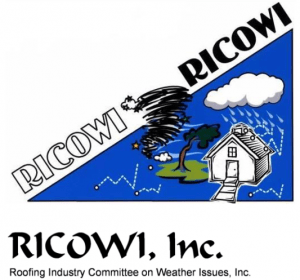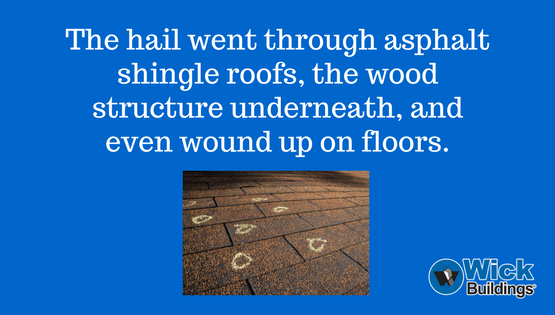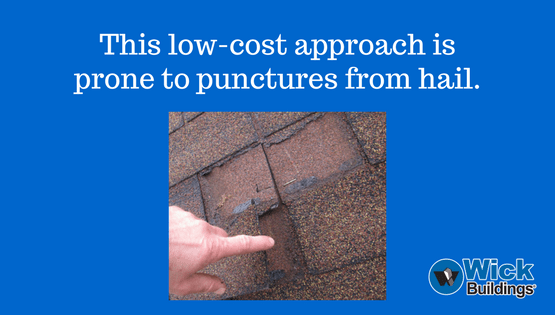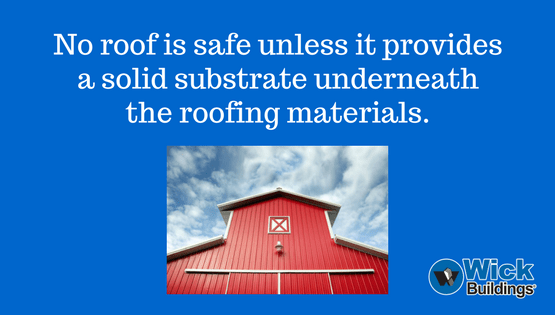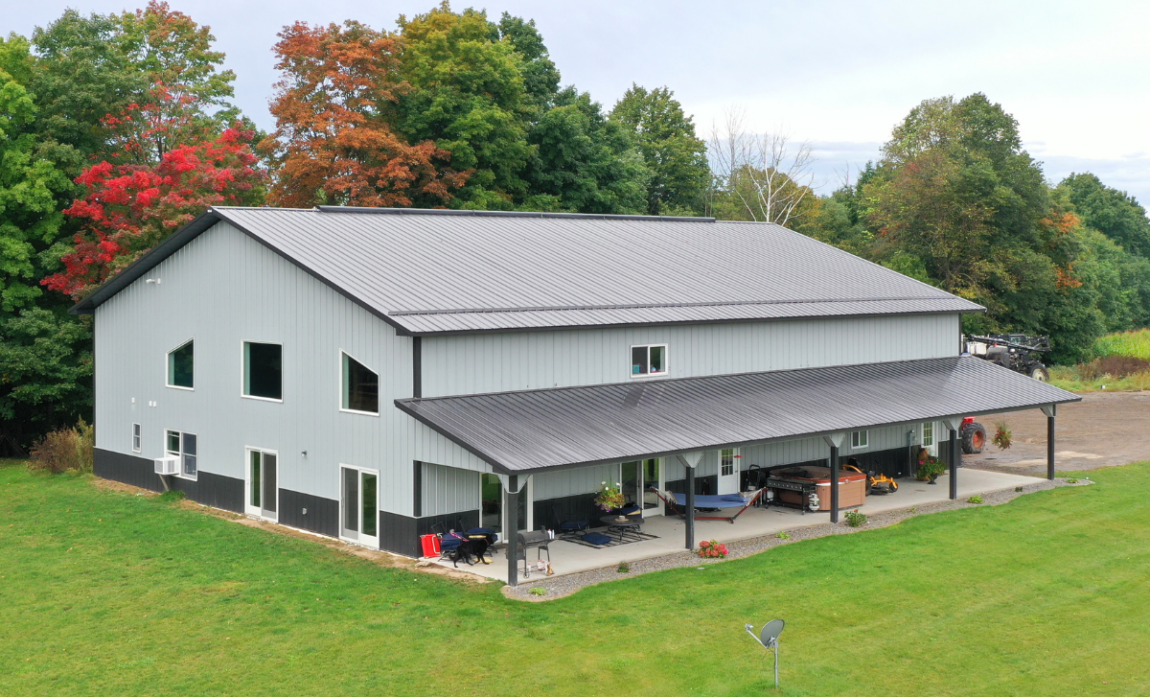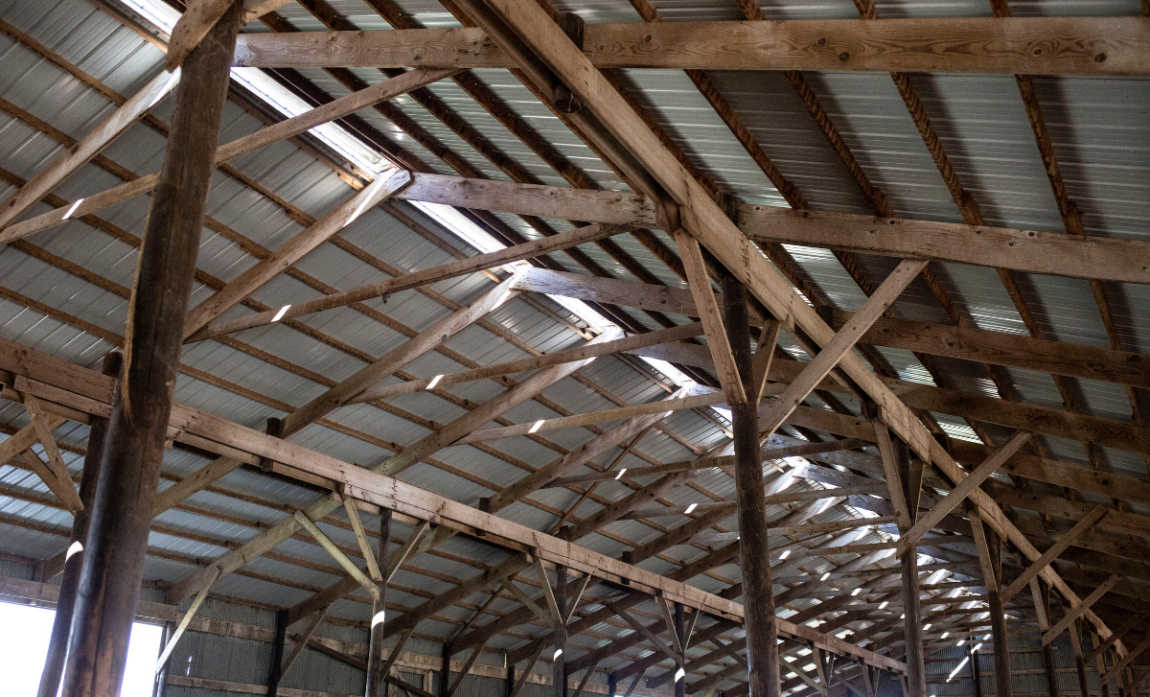It’s not a regular occurrence for 5” hail to rain down on pole barns in the Midwest. But there are lessons to be learned from areas in the country where that does occur – such as Fort Worth, Texas. A report shows us some steps to take to protect your pole barn from roof hail damage.
Many of us in the Midwest are familiar with the destructive power of hail. But what we’re not accustomed to is 4-5” inch hail.
But parts of the country are, which is part of the reason for the Roofing Industry Committee on Weather Issues, Inc. (RICOWI) generating a 2016 Hailstorm Investigation Report. Their insights from this worst-case scenario include some smart building guidelines to keep in mind.
What is Hail Damage to a Roof?
Hail damage occurs when your roofing material is punctured or dented by falling hail. It can result in leaks to the roof and may require repairs, ranging from minor patching to full roof replacements. Hail damage is typically covered by insurance.
Why Did RICOWI Create a Report on Hail Damage?
RICOWI is a non-profit organization established in 1990. According to David Roodvoets, the origin of this report and others the organization generate can be traced back to several hurricanes.
Hurricane Hugo occurred in 1989 and was the primary driver in creating RICOWI. Industry concerns about the reporting of damage results from Hurricane Andrew in 1992 were a major driver in RICOWI establishing the wind and hail investigation programs.
RICOWI’s goal with the reports is to create a “greater industry understanding of what causes roofs to perform or fail in severe wind and hail events, leading to overall improvements in roof system durability, the reduction of waste generation from re-roofing activities, and a reduction in insurance losses that will lead to lower overall costs for the public.”
Why Did RICOWI Choose the Dallas-Forth Worth Area for the 2016 Report?
RICOWI monitors all of the big hailstorms across the country. They focus on big storms that cover a large area. Once a storm strikes, RICOWI deploys a team of 30 people on the ground to assess the damage.
The team is comprised of roofers, manufacturers and building consultants. A diverse range of people ensures no one brings a vested interested to study. “It’s all based on getting people from different groups on a team to get factual information,” Roodvoets said.
The storm that struck the Dallas-Forth Worth area in 2016 was a doozy, producing hail from very small to 4-5 inches in diameter, particularly in the Wylie area. Residential property damage was estimated to be near $250-500 million. The wide ranges of hail sizes provided the variety RICOWI needed for their research.
The hail went through asphalt shingle roofs, the wood structure underneath, and even wound up on floors. Roodvoets compared it to dropping baseballs on the buildings. “It had to be awful,” he said.
What Were the Takeaways?
With the destructive force of 4-5 inch hail, nothing survives totally. Most roofs had serious damage. Roodvoets notes that in the Midwest, such storms typically don’t happen. In fact, most of the volunteers on the RICOWI team had never seen this type of destruction.
However, hail damage to a roof usually occurs when hailstones exceed 1 ¼ – 1 ½ inches in diameter. Shingles are likely to be damaged at the 2 inch mark.
In short, hail damage does occur here. So what are some of the report’s big takeaways?
Modified bitumen membrane roofs installed over insulation will result in problems. The report found a number of issues with modified bitumen roofs that were installed directly onto low compressive strength insulation. This low-cost approach is frequently used in the south, and is prone to punctures from hail.
It should be noted that all low slope roofing membranes (TPO, PVC, EPDM, Modified Bitumen and BUR) installed over low compressive strength material will not perform as well as low slope roofing systems installed over high compressive materials. The types of damage differ by product or system and type, and that will be indicated in RICOWI’s reports.
Roofs with reasonable support perform well. As we just noted, no matter what roofing material you use, including Modified Bitumen, will perform better when some sort of support system is included underneath the roofing material, such as gypsum board or a wood fiber board.
Thin-gauged metal roofs can be a problem. If you’re using a fastened metal roof, the overall tensile strength is critical in preventing damage to your building’s roof. The overall tensile strength is determined by the hardness and the thickness of the steel. U.S. Steel explains this here in more detail.
Metal roofing on steep slopes performed well. The report notes that metal roofs exposed to less than .75 inch hail were not dented or damaged. One roof was exposed to 3.0-3.5 inch hail and experienced damage at the overlap seams, but other than that, there were no fractures.
Roofs that have shingles on top of shingles are vulnerable. While building codes may allow for shingles to be placed on top of other shingles, these roofs tend to be more susceptible to damage, especially the gaps around the shingles.
Valleys and ridges are the weak spots. Most of the damage noted in the report occurred in valleys and ridges, where naturally, the support seems to be the weakest.
Can You Prevent Hail Storm Damage?
The answer to that is yes and no. If you’re getting pounded with 4+ inch hail, the answer is no. You’re going to experience some damage.
But if you’re in the Midwest, where hail typically is less than two inches, you can, ahem, weather the storm. However, no roof is safe unless it provides a solid substrate underneath the roofing materials.
If you have any damage from inclement weather, or would like to repair a current issue, first contact your local Wick Builder using https://wickbuildings.com/

